In 1909, just a few years after carrying out major work on Trent Park, Francis Augustus Bevan sold the remaining 26 years of the lease for £12,114 to Sir Edward Sassoon. Sassoon was a Liberal Unionist MP for Hythe and a member of the long-established, and very wealthy, firm of merchants and bankers. He had married into the Rothschild family and had two children.
Sir Edward died in 1912 and left Trent to his son, Philip, aged 23. With other houses to distract him in the short term, Philip did little at Trent. In 1916, while he was serving as Field Marshal Haig’s private secretary, the house was advertised to let, fully furnished, and in 1919 some of the furniture was sold off. Sir Philip, as he had become, was elected as the Conservative MP for Hythe in the 1918 Election.
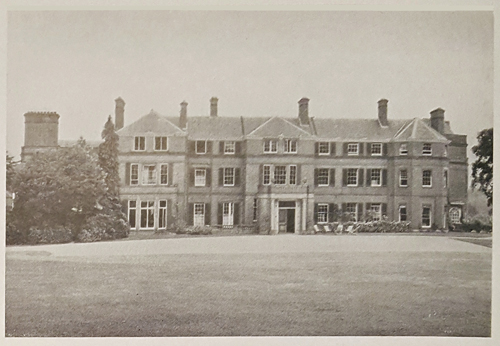
Note the removed creeper and balustrade from the roofline). Country Life, January 10th 1931
However, he clearly had plans for Trent, for in 1923 he purchased the freehold and set out to improve its appearance. Unfortunately, as the Country Life photographs show, even with the creeper stripped and the balustrade removed from the entrance front, it was not a pretty house. In the following year Sir Philip sold off more of its contents and bought bricks and stonework from the recently-demolished Devonshire House, in Piccadilly.1
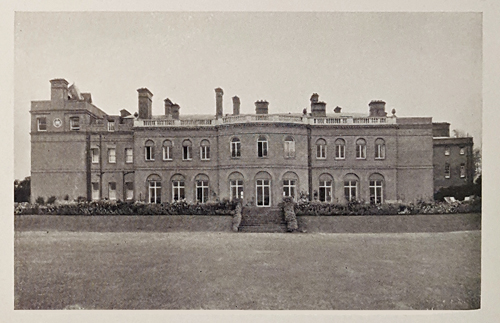
The exposed tower can be seen on the L/H). Country Life, January 10th 1931
From 1925 to 1931 the house was completely re-designed inside and out. The nineteenth century east tower and the bow in the centre of the north front were removed and the north front was made symmetrical and raised to the same height as the south. All the north-facing windows were removed, including some of those dating from the 1808 work, and were replaced with re-proportioned ones, irrespective of internal floor levels.2 The facades were re-faced with the rose-red bricks and stone dressings from Devonshire House, including the doorcase on the south front.3 The old office range to the west, however, was sufficiently masked by trees to be left more or less as it was. A broad terrace was constructed to the north, a large square of paving and cobbles laid in front of the entrance and a pool and orangery built to the east.
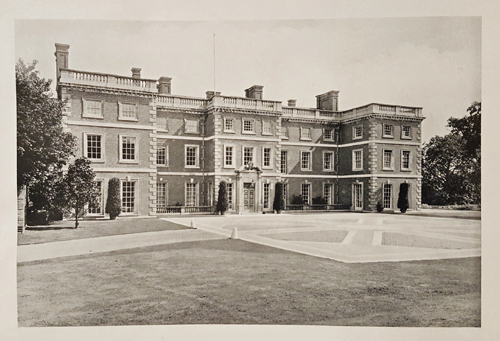
Sassoon was helped by the existing internal plan, which included a long corridor running east to west through the whole building, with all the rooms opening off it. He connected the three main rooms by double doors (library, saloon and drawing room), panelled the ground floor rooms and installed an oak staircase from Devonshire House.4
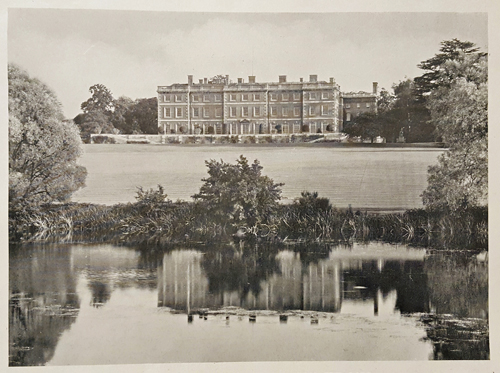
Country Life records the colours employed in the main rooms. The Drawing Room was ‘a warm parchment shade’, the Blue Room ‘a pale greyish blue’, the Library ‘a deep sunny yellow’ and the Saloon walls were hung with Chinese paper, the colouring of which was ‘a sober harmony of buff and quiet green which is taken up in the woodwork’. Although the Zoffany above the chimneypiece in the Dining Room was described, the wall colour was not. However, it seems that the name of the room was changed to the Green Room at this time, which might provide a clue.5
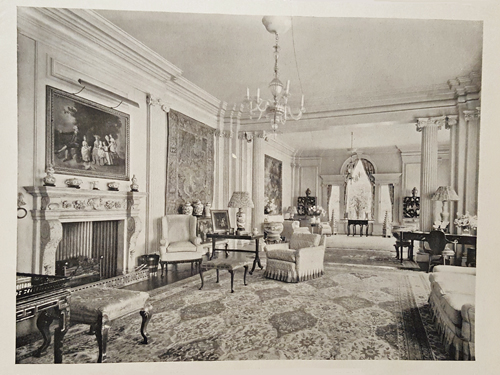
Trent Park, when finished, had a very different feel to his earlier house, Port Lympne, and had little of the previous extravagance. Much more what Clive Aslet has called “an appreciation of English reserve”.6 Sir Philip employed the artist and illustrator, Rex Whistler, once again, but on a far smaller scale.
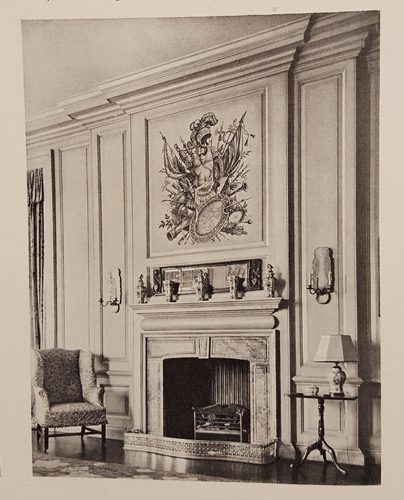
Fine statues were acquired from Wrest Park, Stowe and Milton Abbey and some exotic birds were brought into the park. The latter included flamingos, pelicans, black and white swans, spoonbills and a pair of King penguins.
Sassoon had completely transformed the house and made:
a home that the Sassoon family might have lived in had they arrived in England with the same wealth and status a hundred years previously.7
For the next eight years he entertained frequently and on a grand scale. Members of the Royal Family, aristocrats, Politicians, sportsmen and actors would often attend his weekend house parties.
As Christopher Hussey wrote:
Sir Philip has produced a building at once dignified and unpretentious, practical yet civilised, that can be regarded as an ideal example of English domestic architecture unalloyed by fashion or fantasy.
Though the style is traditional, the house is essentially modern in its simplicity of form and fitness for the purposes of country life.8
Sir Philip died following an operation to remove his tonsils on 3rd June 1939 and his ashes were scattered over Trent Park from the air.9
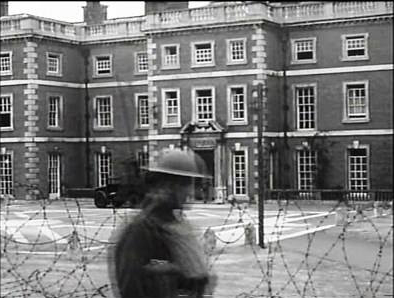
Soon after the start of WWII Trent Park was requisitioned by the War Office and taken over by a highly secret unit known as MI19. The role of this organisation was to obtain information from enemy prisoners of war. They had a number of Combined Services Detailed Interrogation Centres (CSDIC) in the SE of England and a few overseas. The house was wired with specialised bugging and recording equipment in preparation for the eventual capture of high-ranking German officers.
As they started to arrive they were housed, two to a room, prisoners of equal rank but from different units or services. The idea was that they would talk to each other about their experiences and that every word would be picked up. In the basement was the ‘M Room’, where German Jewish exiles would be listening and recording anything that might be of interest.
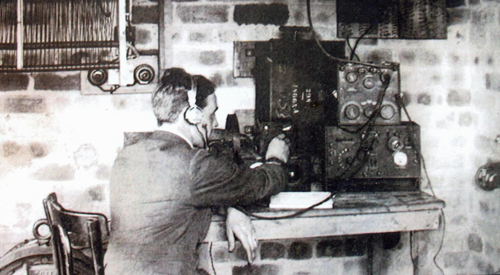
The luxurious surroundings and the humane treatment at the hands of their captors led them to become unguarded in their conversations, little suspecting that they were being bugged. Soon, they handed British and American Intelligence valuable information on such things as German U-boat tactics, bombing radar system technology (the Knickebein, X-Gerät and Y-Gerät) and some of the first evidence of war crimes and atrocities including the fact that the regular German Army were just as guilty as the SS. The mass killing of Jews also became clear as well as new revelations of an SS mutiny in a concentration camp in 1936. However, one of the biggest intelligence coups of the war was the news of Hitler’s secret weapons (V1 & V2) and the atomic bomb programme. The location of the V2 site at Peenemünde was revealed, which led to the pre-emptive Operations Hydra and Crossbow. It is believed that this intelligence, together with the cracking of the Enigma Codes at Bletchley Park, shortened the war by up to four years.
It has been rumoured that Hitler’s deputy, Rudolf Hess, was kept at Trent Park for a short time, but there seems to be no documented evidence to support this.
The growing number of senior Axis officers was such that two new CSDIC were opened in Buckinghamshire in 1942. The first was at Latimer House, in Latimer, and the second (for Italian prisoners) at Wilton Park, in Beaconsfield. In August of that year the first General arrived at Trent Park, Ludwig Crüwell. He was joined, in November, by General Wilhelm Ritter von Thoma. Between the arrival of Crüwell and October 1945 a total of 84 German Generals and over 20 Colonels spent time at Trent Park.
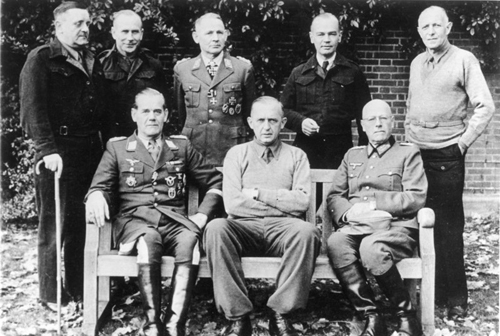
Back row from left to right: General der Infantrie Dietrich von Choltitz, Oberst Gerhard Wilck, General der Fallschirmtruppe Hermann-Bernhard Ramcke, Generalmajor Kurt Eberding, Oberst Eberhard Wildermuth.
Front row from left to right: Generalleutnant Rüdiger von Heyking, Generalleutnant Karl-Wilhelm von Schlieben, Generalleutnant Wilhelm Daser. Bundesarchiv Bild 146-2005-0136
The bugged conversations also provided a unique insight into the mind of the enemy, which enabled targeted propaganda to be deployed to exploit any weaknesses. The success of the whole operation was due to Lieutenant Colonel Thomas Kendrick, who headed the unit, and his team of secret listeners.10
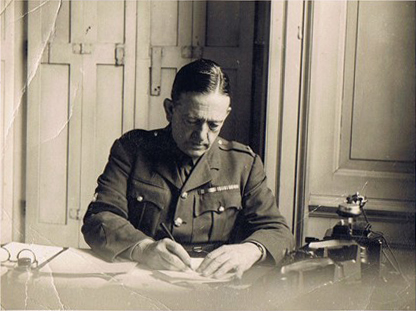
When the war came to an end Sir Philip Sassoon’s cousin, Hannah Gubbay, moved into the house. However, in 1951 the entire Trent Park estate was compulsorily purchased by Middlesex County Council in order to preserve the Green Belt. A cottage was given to Mrs Gubbay for as long as she lived, and she added a wing at each end in order to house much of the Sassoon porcelain, paintings and furniture.11
In 1947 the estate became a Ministry of Education emergency training college for male teachers, then in 1950 a residential, co-educational training college. In 1965 the Greater London Council took over the administration of the park and the London Borough of Enfield took over the college. Hannah Gubbay died in 1968 and most of the land was adapted for use by the public as Trent Country Park, officially opened to the public in 1973.
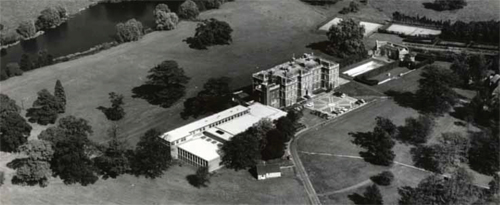
In 1974 Trent Park College of Education became part of Middlesex Polytechnic, which itself became Middlesex University in 1992. The London Borough of Enfield took over the responsibility of managing Trent Country Park in April 1986, following the demise of the GLC.
The house and 50 acres of grounds were sold to Berkeley Housing Group in September 2015. It is hoped that a proper museum will be created in the house to tell the important story of the house.
NOTES AND SOURCES OF INFORMATION
1 Country Life. January 10th 1931, p.45
2 A very good account of the house and of Camlet Moat can be seen in this PDF: Alan Mitellas. A Concise History of Trent Country Park. June 2015. As will be seen, I have drawn heavily from this work.
3 Which is slightly too tall and rises into the window above.
4 Adrian Tinniswood. The Long Weekend. 2016. p.106.
5 Country Life. January 17th 1931 pp.66-72
6 Clive Aslet. The Last Country Houses. 1982.
7 Damian Collins. Charmed Life. The Phenomenal World of Philip Sassoon. 2016. P.174
8 Country Life. January 10th 1931, p.45
9 As Under-Secretary of State for Air, Sassoon had been made Honorary C.O. of 601 (County of London) Squadron.
10 The story of this unit is told in Helen Fry’s book The M Room: Secret Listeners who Bugged the Nazis. Dr Fry has also written an excellent book on Colonel Kendrick Spymaster: The Secret Life of Kendrick.
11 She gave a lot of the collection to the National Trust house, Clandon Park.

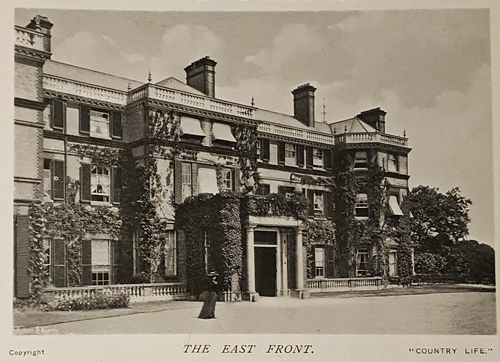










Fascinating read, Patrick. Alyson and I are always interested in Trent because we met there when it was a college and we still live not far away. I’m glad to see its wartime significance is being recognised but I hope it won’t be at the expense of its unique role in the 30s. Trust you’re well. David Hepworth.
Thanks David. It’s a great place with a long history. I’d heard about it as a child, but had never been, and was chuffed to be asked to work on it. Sassoon’s time was its real heyday and I also hope that the story of this will be told. We’re very well, thanks. Hugely busy (fortunately).